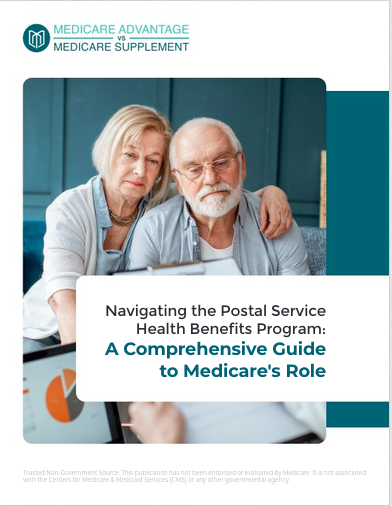Key Takeaways
-
While Medicare may seem simple on paper, the real challenge begins when you try to use it for your actual health care needs.
-
Understanding the limits, costs, and coordination between different parts of Medicare in 2025 is critical to avoiding surprises in coverage or out-of-pocket costs.
The Illusion of Simplicity
When you first hear about Medicare, it sounds reassuringly straightforward. There are four parts—A, B, C, and D. You enroll at the right time, choose your coverage, and that’s that. But once you start trying to use your benefits—for hospital stays, doctor visits, medications, or specialized services—the gaps, requirements, and confusing terms become impossible to ignore.
What Happens When You Actually Need to Use It
Enrolling in Medicare is one thing. Using it effectively is something else entirely. Even people who thought they understood the system often find themselves surprised by what’s not covered, what’s partially covered, and what steps must be taken to access care.
For example, Medicare Part A helps cover inpatient hospital care, but there’s a deductible of $1,676 per benefit period in 2025. After 60 days, daily coinsurance kicks in—and that’s assuming your stay qualifies in the first place. Part B, covering outpatient care, also has its own deductible ($257 annually) and coinsurance (typically 20%).
Knowing this in advance can help, but many people don’t fully grasp these limits until they receive a bill or denial.
Understanding the Gaps
Original Medicare (Parts A and B) does not cover everything. There are significant gaps that can affect your physical health and your finances.
Services Medicare Doesn’t Cover
You might expect Medicare to act like comprehensive insurance, but many essential services are excluded, including:
-
Long-term custodial care
-
Most dental care
-
Routine vision and hearing exams
-
Hearing aids
-
Overseas medical care
Even for covered services, there are rules, restrictions, and limitations that can delay or complicate access.
Out-of-Pocket Costs Add Up
You’re responsible for premiums, deductibles, coinsurance, and in some cases, balance billing. In 2025, the Part B premium is $185/month, and the Part A premium (if you don’t qualify for free coverage) can be as high as $518/month. Add to that copayments, and your yearly costs can quickly become overwhelming.
When Multiple Parts Don’t Work Seamlessly
Medicare’s structure is fragmented. You may have Part A through one source, Part B through another, and Part D or additional coverage elsewhere. These programs aren’t integrated, so coordination often falls on your shoulders.
Part D: Prescription Drug Confusion
If you’re enrolled in a standalone Part D plan for prescriptions, coverage depends on your specific plan’s formulary, pharmacy network, and prior authorization rules. In 2025, the deductible for Part D plans can be up to $590, and although the out-of-pocket cap is now $2,000, many beneficiaries still face unexpected denials due to formulary restrictions or step therapy requirements.
Part C: Added Complexity for Some
Medicare Advantage plans (Part C) can replace Parts A and B, and sometimes D. But these plans are private and vary widely. While many beneficiaries enjoy extra benefits, they may find that prior authorization rules and narrow provider networks reduce access to care. Appeals can be time-consuming and confusing.
Enrollment Is Not One-and-Done
You can’t just enroll once and forget about it. Medicare requires ongoing attention and reevaluation.
Annual Enrollment Periods
Each year, between October 15 and December 7, you have the opportunity to make changes to your Medicare plan. This includes switching between Original Medicare and Medicare Advantage, or changing your Part D plan. If you miss this window, you may be stuck with coverage that no longer fits your needs.
Special Enrollment Periods (SEPs)
Certain life events—like moving, losing other insurance, or qualifying for Medicaid—trigger SEPs. However, not knowing you qualify can mean missing out on these time-sensitive windows. And not every SEP gives the same rights to change all parts of coverage.
Coordination with Employer or Retiree Coverage
Many people work past 65 or have retiree benefits. Coordinating those with Medicare can be confusing.
Working Past 65
If you have employer coverage through a job and the employer has 20 or more employees, you may delay Medicare without penalty. But once you leave or lose that coverage, you must enroll in Medicare within 8 months—otherwise, you face late penalties.
Retiree Plans
Some retirees maintain health benefits through former employers. These plans often require enrollment in Medicare Part B and may coordinate benefits differently. Failing to enroll properly can result in denied claims or higher costs.
Penalties That Never Expire
Late enrollment penalties can follow you for life.
-
Part B Penalty: For each 12-month period you delay Part B without other creditable coverage, you pay a 10% penalty—forever.
-
Part D Penalty: If you go without creditable drug coverage for more than 63 days, you’ll pay 1% of the national base premium for each month you delay.
These penalties are avoidable, but only if you understand the rules before it’s too late.
Medicare Isn’t One Size Fits All
Every person’s Medicare experience depends on their medical history, financial situation, and geographic location. That makes comparing plans and predicting costs much more complex.
Provider Access Can Be Limited
Under Original Medicare, you can see any provider who accepts Medicare. With many Medicare Advantage plans, you’re restricted to a network. Going outside that network—even accidentally—can mean footing the entire bill.
Prior Authorization and Denials
In both Original Medicare and Medicare Advantage, prior authorization may be required for some services. In 2025, CMS has increased transparency around denials and appeals, but delays still occur. You may have to resubmit documentation or appeal, which takes time and effort during health crises.
Appeals Process Can Be Overwhelming
Medicare allows you to appeal claim denials, but the process is not quick or easy. It typically involves:
-
Understanding the denial code
-
Requesting a redetermination
-
Providing medical evidence
-
Waiting weeks or months for a decision
Many people give up due to confusion or fatigue.
Keeping Up With Annual Changes
Medicare rules and costs can change each year. In 2025, we’ve seen:
-
A $2,000 cap on Part D out-of-pocket costs
-
Higher premiums and deductibles for Parts A and B
-
Adjustments in IRMAA thresholds for higher-income enrollees
Staying informed is crucial. What worked for you last year may no longer be your best option.
How to Prepare and Stay Ahead
Medicare can work well—but only if you stay proactive.
What You Should Do:
-
Review your plan annually during the Open Enrollment Period.
-
Check your Part D formulary to make sure your drugs are covered.
-
Understand the costs of each part of Medicare, including deductibles, coinsurance, and premiums.
-
Avoid late penalties by enrolling at the right time.
-
Track notices from Medicare, especially the Annual Notice of Change (ANOC).
-
Ask questions before receiving care that may require prior authorization.
Medicare Can Work—If You Understand the System
What begins as a basic enrollment decision quickly becomes a maze of rules, restrictions, and reevaluations. Medicare can absolutely support your healthcare needs—but only if you actively manage your plan, stay informed, and reach out for help when needed.
To get the coverage you deserve and avoid costly mistakes, speak with a licensed agent listed on this website. They can help you understand your options and make the right decisions for your situation.










